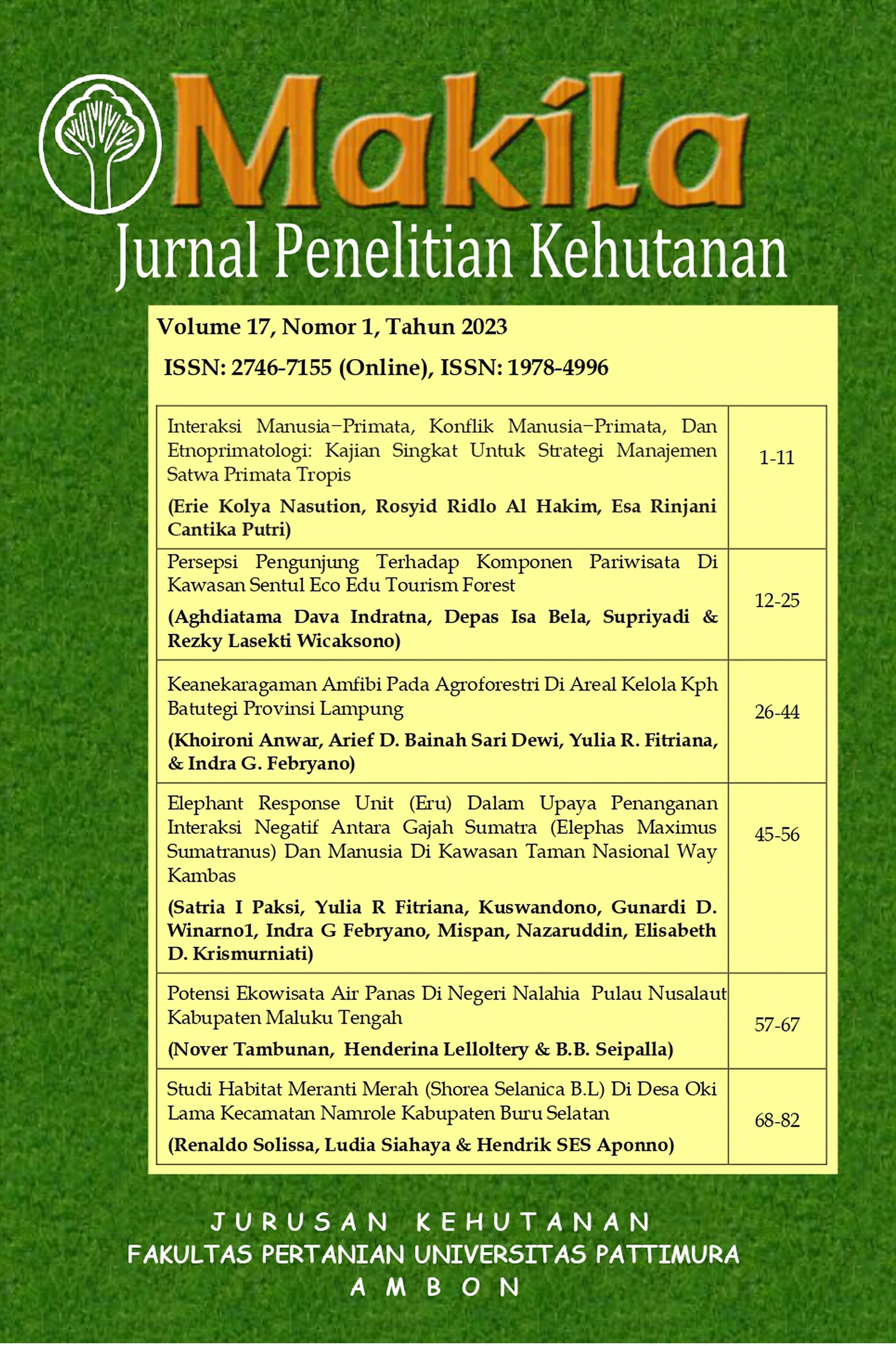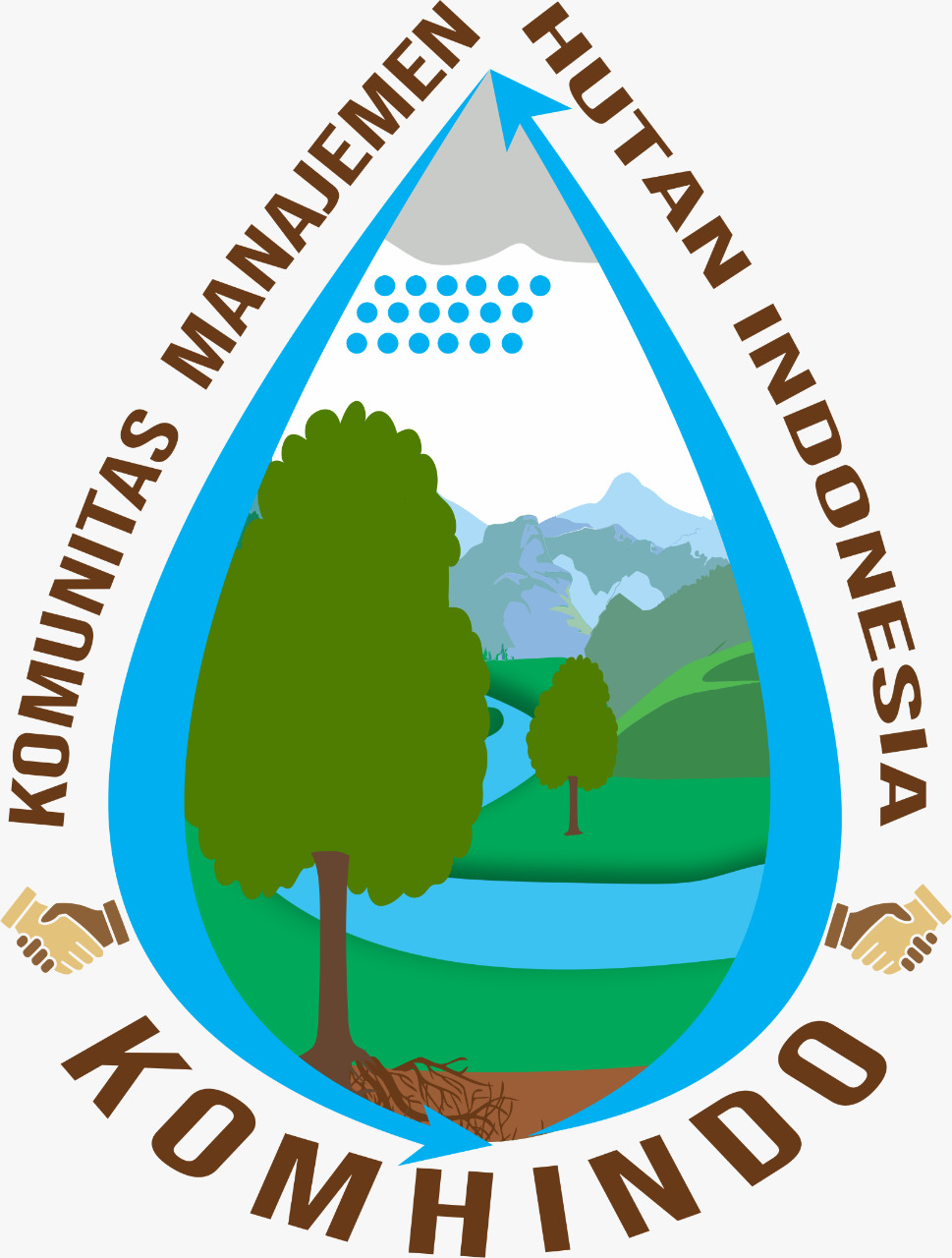Keanekaragaman Amfibi Di Areal Kelola Agroforestri KPH Batutegi Kabupaten Tanggamus Lampung
Abstract
Amphibians are one of the constituent elements of ecosystems that have an essential role as bio-indicators of environmental damage. This study aimed to determine amphibians' diversity and identify amphibians' distribution in the carbon footprint reduction location at PT. Nestlé, KPH Batutegi, Tanggamus Regency, Lampung Province. Data was collected using Line Transect and Visual Encounter Survey (VES) methods, and collected data were analyzed using the Shannon-Wiener index, dominance index, stable equality index, wealth index, and the spatial analysis method to determine the spatial distribution of amphibian species. The results showed moderate amphibian diversity, with the Shannon-Wiener index of 1.85455 low dominance index with a value of 0.08799, a stable equality index with an index value of 0.83755, and a wealth index included in the low criteria with an index value of 2.256214. There were ten species of amphibians from four families, namely katak tegalan (Fajervarya limnocharis), kodok puru (Ingerophrynus parvus), kongkang jangkrik (Rana nicobariensis), katak sejati (Ranidae), kongkang kolam (Hylrana chaconata), bancet rawa (Occidozyga sumatrana), katak pohon bergaris (Polypedates leucomystax), kodok buduk (Bufo asper), katak sisi kasar (Hylarana glandulosa), kodok sawah (Fajervarya cancrivora). The most common amphibian species were found close to the river with a distance of 0-50 m, with an altitude of 600-1000 mdpl, and the type of land cover was dry land agriculture. Amphibian diversity in KPH Batutegi is classified as moderate, so further research is needed to review the existing amphibian diversity after planting and caring for the location.
Downloads
Copyright (c) 2023 Khoironi Anwar, Arief Darmawan, Bainah Sari Dewi, Yulia Rahma Fitriana

This work is licensed under a Creative Commons Attribution 4.0 International License.











